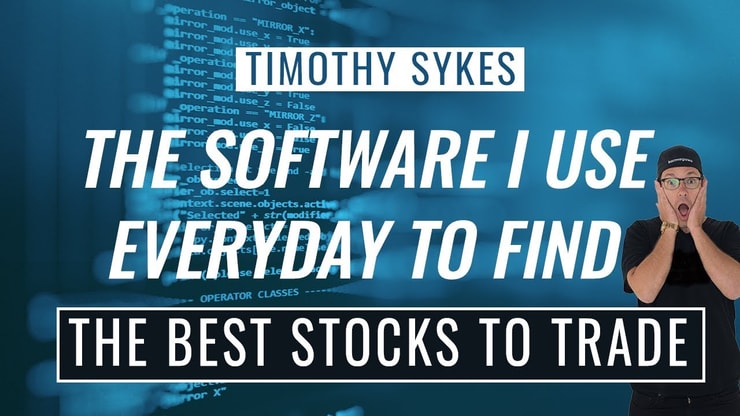In the fast-paced world of day trading and technical analysis, having the right tools is essential. These tools are more than just software; they’re your gateway to the markets, offering the insights and functionality needed to make informed decisions. From platforms that provide real-time data to analysis software that helps predict market trends, the right tools can be the difference between success and failure in trading. My years of trading experience have taught me the invaluable role these tools play in strategy development and execution.
Read this article because it offers a comprehensive guide on the essential tools for day trading and technical analysis, drawing from my extensive trading experience to highlight the significance of these tools in strategy development and execution.
I’ll answer the following questions:
- What are day trading tools?
- What is the essential role of tools in successful day trading?
- How do day trading and technical analysis intersect?
- What are the best trader tools for day trading?
- How does StocksToTrade benefit traders?
- What makes TradingView stand out for traders?
- Why are backtesting tools crucial for traders?
- How do risk management tools help in trading?
Let’s get to the content!
Table of Contents
What Are Day Trading Tools?

2025 Millionaire Media, LLCDay trading tools are indispensable assets for the computer screens of anyone in the trading world, from beginners to seasoned investors. They encompass a wide range of software and apps designed to analyze markets, execute trades, and manage risks.
These tools include trading platforms and sites offered by brokers like Charles Schwab, TD Ameritrade, Interactive Brokers, Fidelity, E-Trade, and Tradestation. They provide the backbone for trading activities, offering an interface where traders can monitor and manage their positions, from stocks and ETFs to gold and other assets.
Additionally, fundamental analysis software, scanners, and automation tools play a critical role in identifying trading opportunities and executing strategies. For educational resources, traders often turn to articles, reviews, and educational courses to enhance their knowledge and skills.
The right set of tools can significantly impact a trader’s ability to make profits, manage losses, and navigate the complexities of day trading.
The Essential Role of Tools in Successful Day Trading
Day trading tools are integral in managing the complexities of rapid market movements. They include everything from charting software to news feeds, allowing traders to analyze data, track market trends, and execute trades efficiently. Good trading tools provide real-time market data, crucial for making timely decisions in a market where seconds can mean the difference between profit and loss.
In my trading career, I’ve relied heavily on these tools to stay ahead of market movements, ensure precise executions, and manage my trades effectively.
The Intersection of Day Trading and Technical Analysis
Combining day trading with technical analysis requires tools that can offer deep insights into market trends and patterns. Technical analysis involves studying past market data, primarily price and volume, to forecast future price movements. This requires robust charting tools, indicators, and analytical capabilities. The right software can help identify trading opportunities, signal potential market turns, and provide a clearer understanding of market psychology. In my practice, integrating technical analysis with day trading strategies has been a cornerstone of my approach to navigating the markets.
What Are the Best Trader Tools for Day Trading?

2025 Millionaire Media, LLCIdentifying the best trader tools for day trading involves considering a variety of factors such as user experience, range of features, and the type of assets traded. Top trading platforms like those from Interactive Brokers or Thinkorswim by TD Ameritrade offer robust functionality for their customers. They provide access to a vast array of instruments and markets, detailed charting, real-time data in multiple timeframes, and advanced order types.
Other essential tools include scanners and automation software, which help streamline the trading process and identify potential trades based on predefined criteria. Additionally, trading software now often comes with integrated fundamental and technical analysis capabilities, enhancing the trader’s ability to make informed decisions.
For those looking into retirement planning or managing diverse investments, tools offering a versatile financial services team to its members, such as those from Fidelity or Charles Schwab, can be invaluable. The best tools for day trading are those that align with the individual trader’s strategies, investment goals, and personal preferences.
More Breaking News
- Is CNH Industrial Set for a Comeback?
- Is Nextracker Stock Set For Growth?
- CoreWeave’s Cloud Triumph: Market Impact
StocksToTrade
StocksToTrade is a platform I often recommend for its comprehensive tools and data that are crucial for effective stock analysis. Its real-time data, research options, and various indicators make it a top choice for traders at all levels.
When it comes to trading platforms, StocksToTrade is first on my list. It’s a powerful day and swing trading platform that integrates with most major brokers. I helped to design it, which means it has all the trading indicators, news sources, and stock screening capabilities that traders like me look for in a platform.
I use StocksToTrade to scan for news, tweets, earning reports, and more — all covered in its powerful news scanner. It has the trading indicators, dynamic charts, and stock screening capabilities that traders like me look for in a platform. It also has a selection of add-on alerts services, so you can stay ahead of the curve.
Grab your 14-day StocksToTrade trial today — it’s only $7!
TradingView
TradingView stands out for its comprehensive charting and social networking features. Its intuitive interface and powerful technical analysis tools make it ideal for traders of all levels. The platform offers a wide range of indicators and drawing tools, enabling traders to analyze market trends and patterns thoroughly. In my experience, TradingView’s community aspect is particularly valuable, providing a space for traders to share insights and strategies.
MT4/MT5
MetaTrader 4 and 5 are widely recognized for their advanced trading and analytical features. These platforms cater to forex and futures traders with robust technical analysis tools, automated trading capabilities, and advanced charting functions. I’ve found the ability to implement custom indicators and automated trading strategies particularly useful in my forex trading endeavors.
Backtesting Tools
Backtesting tools allow traders to test their trading strategies against historical data before risking real money. This is crucial for refining strategies and understanding potential risk and reward. In my trading journey, backtesting has been a key step in strategy development, helping me to fine-tune my approach based on historical performance.
For traders looking to enhance their strategy development process, I recommend diving into my comprehensive guide on backtesting, where I share my experience and techniques for effectively testing and refining trading strategies.
News Feed
Staying updated with the latest market news and links is essential for day traders. News feeds provide real-time updates on market events, economic announcements, and company news, which can have immediate effects on market prices. I’ve always emphasized the importance of integrating real-time news into my trading strategy to capitalize on market-moving events.
Stock Screeners
Stock screeners are invaluable for identifying trading opportunities based on specific criteria, such as price movements, volume changes, or technical indicators. They help in filtering the vast number of stocks to manageable levels, focusing on those that meet your trading strategy’s parameters. Over the years, using stock screeners has been a crucial part of my daily trading routine.
Top Technical Analysis Tools

2025 Millionaire Media, LLCTechnical analysis tools are at the heart of understanding market trends and predicting future movements. They range from basic charting tools to complex indicators and algorithms. These tools analyze past market data to identify patterns and signals that can indicate future price movements. My success in trading has been significantly bolstered by leveraging these tools to understand market dynamics and identify potential trading opportunities.
Risk Management Tools
Risk management tools are indispensable in the toolkit of every day trader, from beginners to seasoned professionals. These tools are designed to help traders, clients, and users manage and mitigate the risks associated with trading. They range from simple position sizing calculators to sophisticated software that can automatically set stop-loss orders based on predefined risk parameters. For clients managing their trades via a brokerage account, these tools can be crucial in preserving funds and preventing substantial losses. They enable traders to determine the appropriate amount to invest in each trade, based on their overall account size and risk tolerance.
These risk management products often come with a variety of categories and advice, tailored to different trading strategies and goals. Whether it’s through a desktop application or an online platform, these tools are accessible to traders of all levels, offering a level of control and safety when navigating the volatile markets. Importantly, for businesses and companies engaged in investing, such as banks and financial institutions, these tools are integral in maintaining the integrity of their clients’ accounts and ensuring compliance with various regulatory requirements.
For beginners, these tools offer a significant advantage, providing a framework to understand and manage risks effectively without the need for hundreds of hours of experience. Some platforms may charge for advanced features, but many basic risk management tools are available at no extra cost, making them accessible to all traders. These tools not only help in maintaining the financial health of one’s trading account but also in building the confidence and discipline necessary for long-term success in the trading world.
For traders seeking to strengthen their risk management practices, I’ve shared my expertise and strategies in a detailed guide on risk management for traders. This resource is invaluable for anyone looking to navigate the volatile markets with a well-thought-out risk management plan.
Position Sizing and Money Management Tools
Effective risk management is critical in trading. Tools that help with position sizing and money management ensure that traders do not expose themselves to undue risk. These tools calculate the appropriate trade size based on account balance and individual trade risk, helping maintain a balanced approach to trading. In my trading experience, consistent use of risk management tools has been a cornerstone in preserving my capital and maximizing profitability.
If you’re looking to master this essential aspect of trading, check out my article on position sizing strategies, where I take a deep-dive into managing trade sizes to optimize your trading performance.
Real-Time Market Data and News Feeds Tools

2025 Millionaire Media, LLCReal-time market data and news feeds provide the up-to-the-minute information needed to make informed trading decisions. These tools offer insights into market movements, breaking news, and economic events that can impact prices.
You’ve got to be watching the market if you’re day trading, even if it’s just on an Apple widget. I’ve always prioritized having access to real-time data to stay reactive to market changes and exploit trading opportunities as they arise.
Backtesting and Historical Analysis Tools
Backtesting and historical analysis tools are crucial for developing and refining trading strategies. These tools allow traders to test their strategies against historical market data, helping to identify patterns and gauge the potential effectiveness of a strategy.
Backtesting can provide insights into how a strategy might have performed under different market conditions, offering an invaluable perspective for risk assessment and strategy refinement. Many trading platforms and standalone software offer backtesting functionality, with varying degrees of complexity and detail.
For day traders and investors alike, these tools are essential in verifying the robustness of their trading strategies before applying them in real-time trading scenarios. Additionally, they provide an educational resource, helping traders understand market dynamics and how different factors can impact their trades. The use of these tools is a common practice among successful traders, forming a part of their regular strategy development and review processes.
The Significance of Backtesting in Strategy Development
Backtesting plays a crucial role in developing and refining trading strategies. By testing strategies against historical data, traders can evaluate their effectiveness and make necessary adjustments. This process helps in understanding the strengths and weaknesses of a strategy before applying it in live trading. My approach to trading has always included rigorous backtesting to ensure the strategies I use are robust and reliable.
Historical Data Analysis for Pattern Recognition
Historical data analysis is key for identifying and understanding market patterns and trends. Tools that offer comprehensive historical data allow traders to study long-term trends and seasonal patterns, which can be invaluable in shaping trading strategies. My extensive use of historical analysis has been fundamental in developing an understanding of market behaviors and trend cycles.
Key Takeaways

2025 Millionaire Media, LLCIn summary, the right trading tools are indispensable for successful day trading and technical analysis. They provide the necessary data, analysis capabilities, and execution speed required to navigate the markets effectively. From charting software and news feeds to risk management and backtesting tools, each plays a vital role in a trader’s arsenal. In my trading career, the consistent use of these tools has been integral to my success, enabling me to make informed, timely, and profitable trading decisions.
Trading isn’t rocket science. It’s a skill you build and work on like any other. Trading has changed my life, and I think this way of life should be open to more people…
I’ve built my Trading Challenge to pass on the things I had to learn for myself. It’s the kind of community that I wish I had when I was starting out.
We don’t accept everyone. If you’re up for the challenge — I want to hear from you.
Apply to the Trading Challenge here.
Trading is a battlefield. The more knowledge you have, the better prepared you’ll be.
What trading tools do YOU use? Let me know in the comments — I love hearing from my readers!
Frequently Asked Questions
What Tools Are Needed for Day Trading?
For effective day trading, you need tools for market analysis (like charting software and technical indicators), real-time data and news feeds, risk management (including position sizing and money management tools), and order execution platforms. Choosing tools that suit your trading style and strategy is crucial.
How Can a Trade Journal Help Improve Your Trading Skills?
A trade journal helps in tracking your trades, strategies, and results. It allows for reflection and analysis of what works and what doesn’t, enabling you to learn from your successes and mistakes. This continuous learning process is essential for improving your trading skills.
Which Tool Is Best for Stock Trading?
The best tool for stock trading depends on your specific needs and strategies. Platforms like TradingView and Thinkorswim offer comprehensive analysis tools, while others like MetaTrader are ideal for automated trading. Stock screeners and news feeds are also crucial for staying informed and identifying opportunities.










Leave a reply